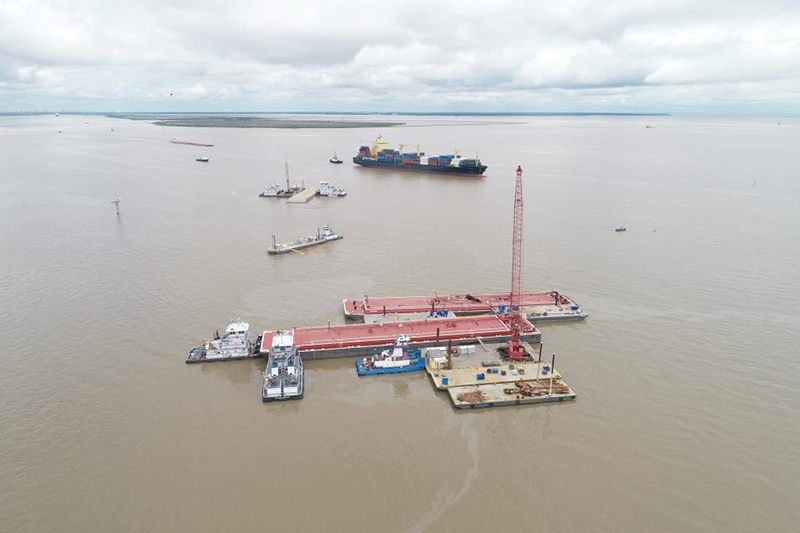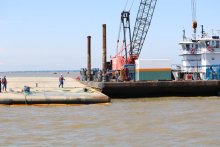Bayport Channel Oil Spill
Oil Spill | Bayport, Texas | May 2019
What Happened?
On May 10, 2019, an estimated 599,676 gallons of oil in the form of a gasoline blending stock, known as reformate, was discharged from Tank Barge 30015T during a collision with the tanker ship Genesis River near Bayport, Texas.
The bow of the Genesis River cut through the hull of the barge and ruptured the barge’s storage tanks. Oil discharged from the barge into the waterway and polluted parts of the Houston Ship Channel, Galveston Bay, and the Texas coastline.
What Were the Impacts?
Following the spill, NOAA and co-trustees worked with the responsible party to cooperatively assess natural resource damages arising from the spill.
The Trustees identified several categories of impacted and potentially impacted resources, including marine mammals, fish, invertebrates, oysters, shoreline and subtidal habitats, and water column, as well as effects to human use/recreation resulting from impacts on these natural resources.
What's Happening Now?
On July 19, 2021 the Department of Justice announced the lodging for public comment of a consent decree proposing a $2.1 M settlement value to restore for natural resource damages.
On September 1, 2021 the Department of Justice announced that a consent decree valued at $2.1 million was finalized. The settlement will go toward restoration projects that help natural resources recover after pollution.

“Working cooperatively with the responsible party, we were able to expedite the assessment of the impacts.” said Kevin Kirsch, Southeast Branch Chief for NOAA’s Assessment & Restoration Division. “This means restoration on the ground sooner to benefit fisheries and wildlife, as well as the people and local economies that depend on them.”
Contacts
Laurie Sullivan
NOS/Assessment and Restoration Division
Laurie.Sullivan@noaa.gov
(707) 320-7232
Stephanie Powers
NMFS/Restoration Center
Stephanie.Powers@noaa.gov
(727) 215-1476








